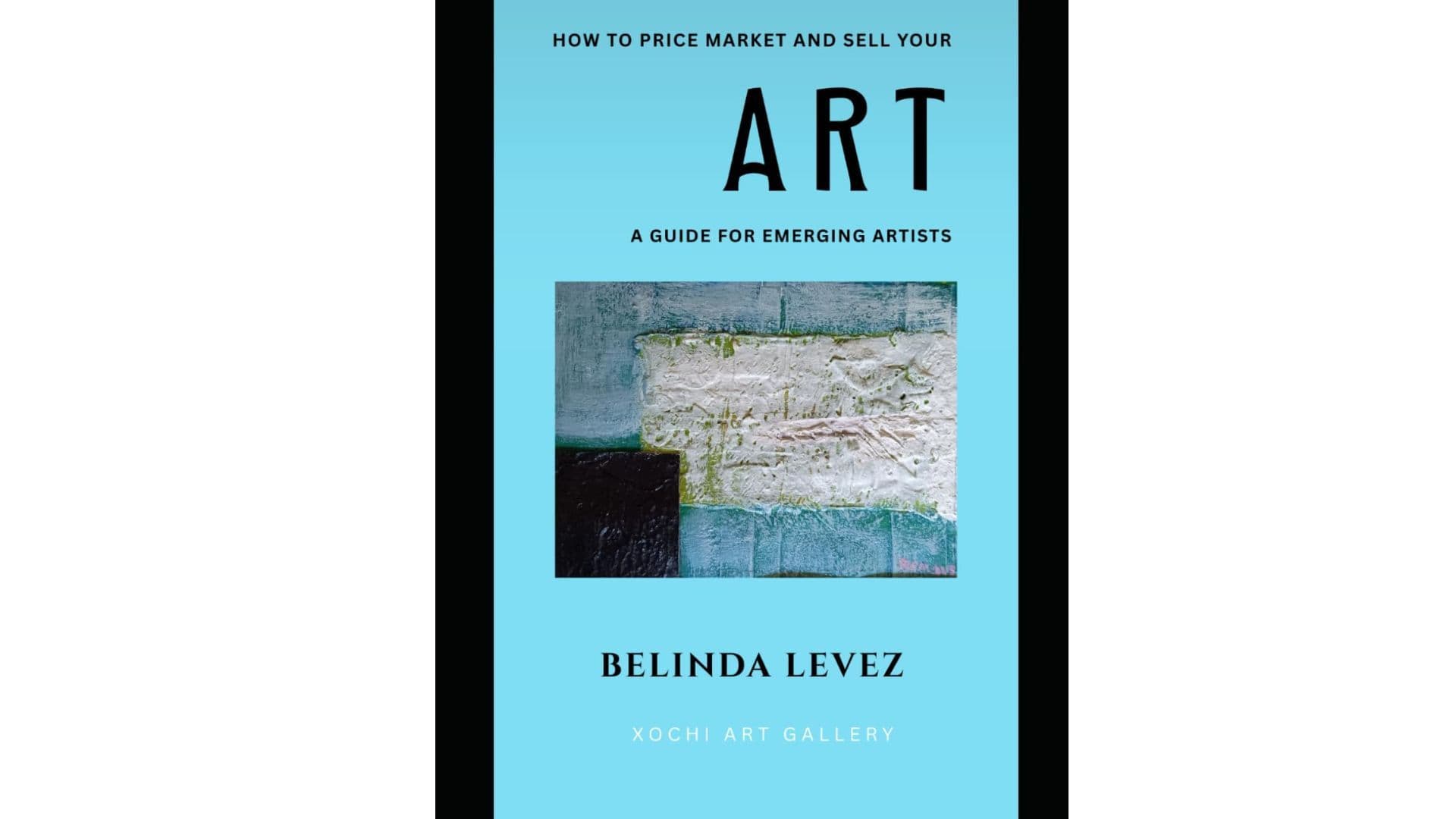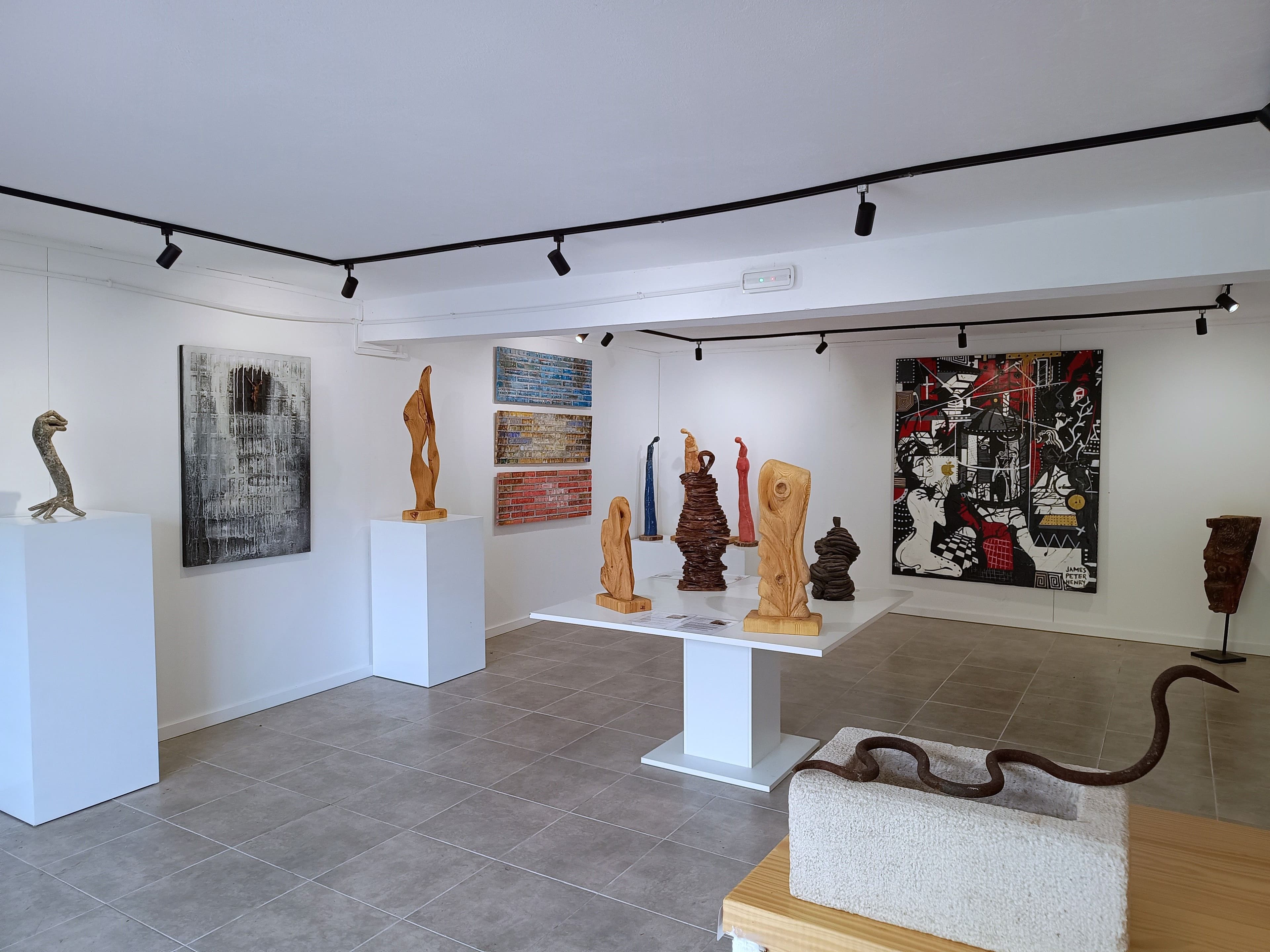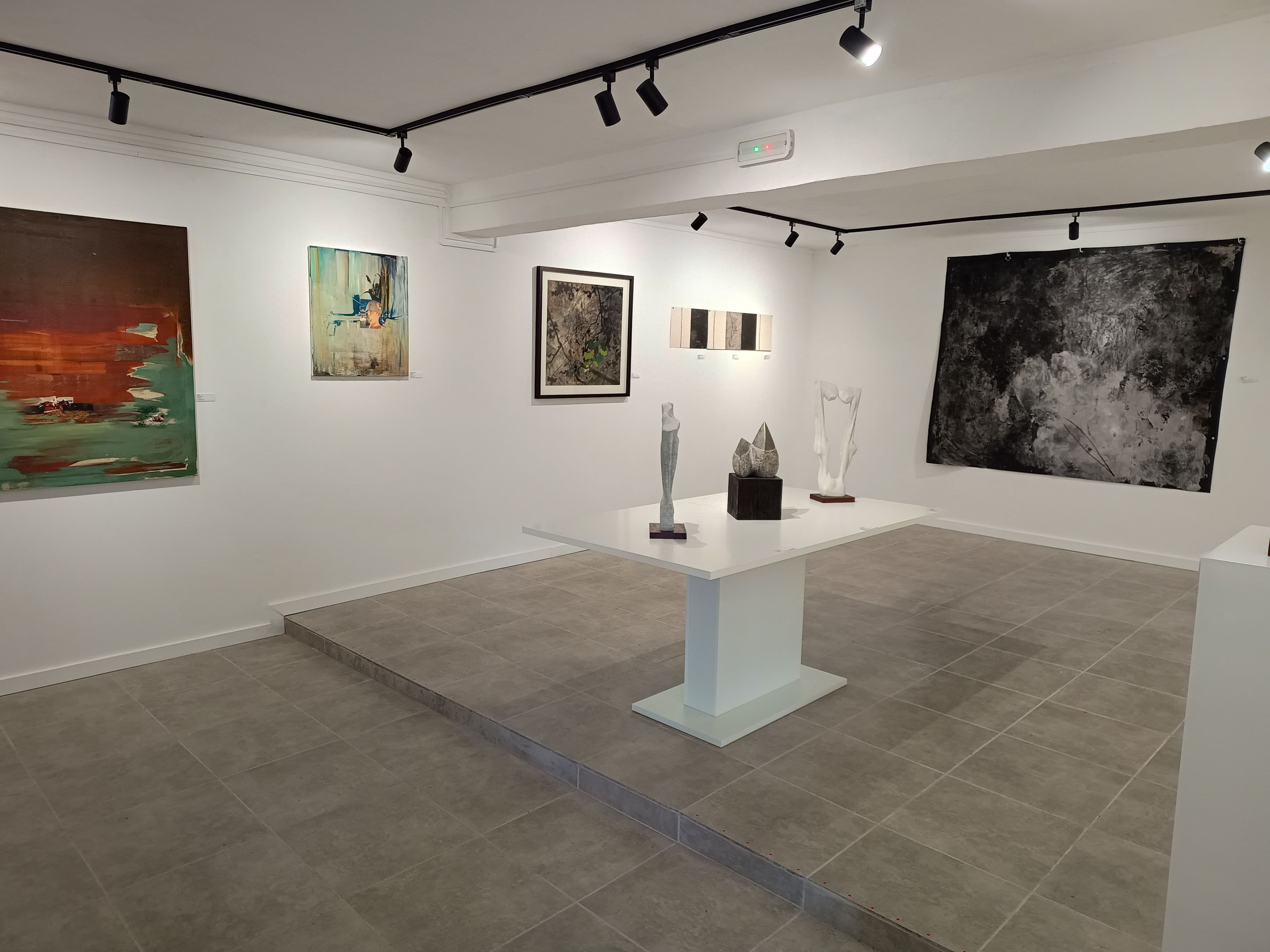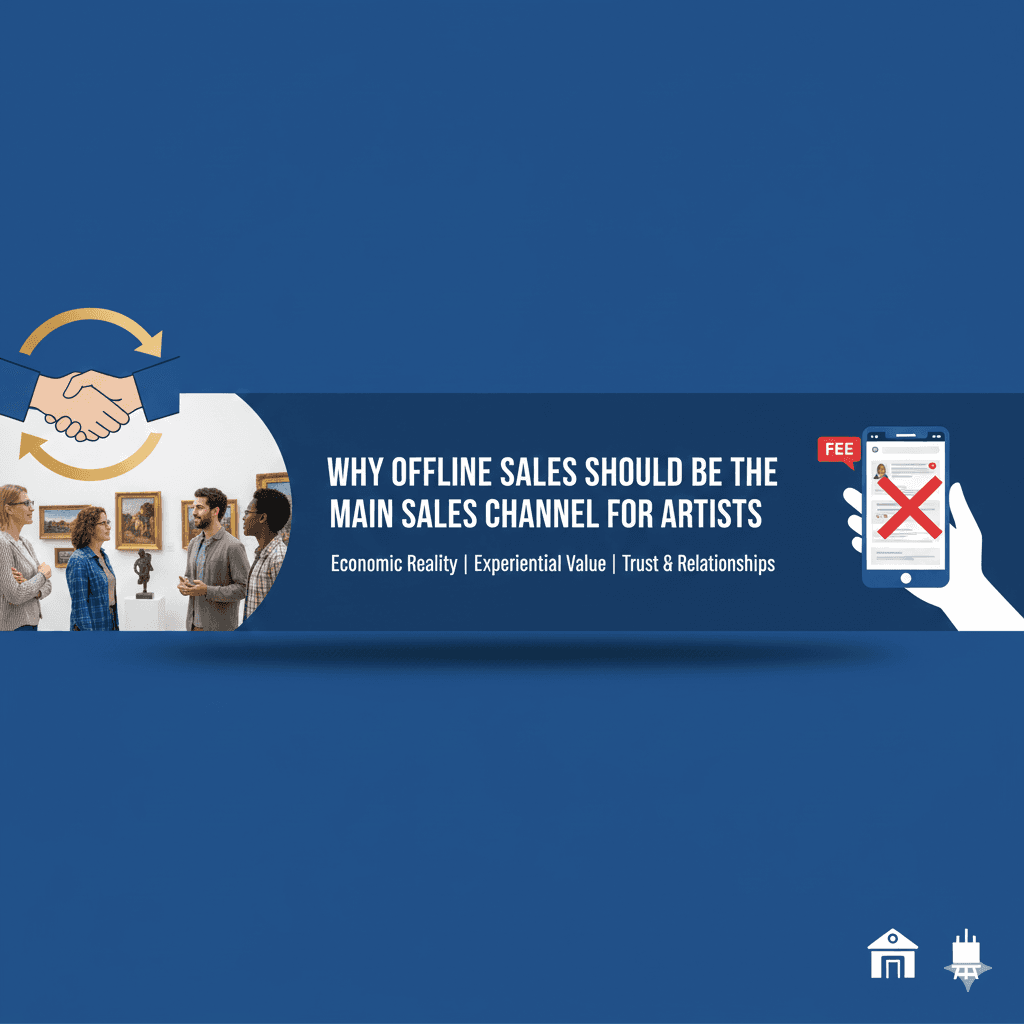
How Bricks-and-Mortar Art Galleries Survive in the Online Age: The Case of Xochi Art Gallery

Over the last two decades, the art world has been reshaped by digital technologies. Instagram has become a showroom, online art platforms have multiplied, and artists increasingly bypass traditional intermediaries to sell directly to buyers. This has raised an important question: can bricks-and-mortar art galleries survive in an era where social media dominates?
Introduction
Over the last two decades, the art world has been reshaped by digital technologies. Instagram has become a showroom, online art platforms have multiplied, and artists increasingly bypass traditional intermediaries to sell directly to buyers. This has raised an important question: can bricks-and-mortar art galleries survive in an era where social media dominates?
The reality is nuanced. While many galleries have closed—particularly in high-rent urban areas—others have adapted by combining physical spaces with online strategies. These hybrid models demonstrate that galleries still play an indispensable role in curating, validating, and contextualising art, while also ensuring safe, secure transactions for buyers who may hesitate to purchase high-value works in the often-anonymous internet marketplace.
One compelling example is Xochi Art Gallery, a boutique contemporary gallery founded in Portugal’s Serra da Estrela Natural Park. Instead of competing with big-city galleries in Lisbon, London, or New York, Xochi has redefined what an art gallery can be: part cultural destination, part community hub, part digital business, and wholly committed to curatorial integrity.
This article examines how galleries like Xochi survive—and thrive—in the age of online art.
The Challenges Facing Bricks-and-Mortar Galleries
Before we consider Xochi’s story, it’s worth understanding the pressures that have driven many galleries to closure.
- Rising Rents: According to a 2022 Artsy report, galleries in major cities have been closing at alarming rates due to high fixed costs. In London, average rents for retail space increased by more than 20% over the past decade, while in New York, small galleries reported spending over 30% of turnover on rent and utilities.
- Competition from Online Sales: The Hiscox Online Art Trade Report estimated that global online art sales reached $13.3 billion in 2021, accounting for 20% of the total art market. Collectors are increasingly comfortable buying artworks through screens.
- Changing Collector Behavior: Younger collectors, especially millennials and Gen Z, are digitally native. They discover new artists on Instagram or TikTok, and they expect the ability to buy art online with the same ease as they order fashion or electronics.
These challenges make it clear: the traditional urban gallery, reliant on walk-in traffic and prestige alone, faces a tough future. To survive, galleries must innovate.

Portugal Now Exhibition at Xochi Art Gallery
Xochi Art Gallery: Reinventing the Gallery Model
Founded by Luc Levez, a software engineer, and Belinda Levez, an author, Xochi Art Gallery has taken a refreshingly different approach.
Instead of situating themselves in Lisbon or Porto, they chose to build their gallery in the Serra da Estrela Natural Park—a UNESCO-recognised region of outstanding natural beauty. Nestled next to a river beach and surrounded by panoramic mountain views, the gallery occupies the ground floor of their own home. This minimises overheads and allows them to focus resources on curation, artist development, and digital marketing rather than rent.
But the gallery is far more than four walls. Visitors are invited to experience a sculpture trail winding through the mountain landscape, transforming the location into a cultural destination. A bar serving Portuguese beer, wine, and gin, along with a sun terrace overlooking the river Zezere, makes it both a social and artistic hub.
By anchoring themselves in a tourist area rather than a commercial city district, Xochi has tapped into a growing trend: cultural tourism. Visitors don’t just come to buy art; they come to experience art in harmony with nature.
The Curatorial Role: Why Galleries Still Matter
The rise of Instagram has given artists a direct line to audiences, but it has also created a problem: oversupply. Thousands of new artworks are uploaded daily, and collectors are left wondering: Which works are authentic? Which artists have staying power? How do I separate quality from noise?
This is where galleries like Xochi remain vital.
- Artist Selection: Xochi carefully recruits a stable of visionary artists, both established and emerging. Their roster includes high-profile names such as James Peter Henry—famed for selling a painted cognac bottle for $1.2 million—and respected international artists like Roger Remaut, Sandra Jane Heard, and Frederic Develay, whose works are in public and private collections.
- Discovering New Talent: The gallery also champions young artists, discovered not online but in-person. Co-founders travel to studios and art schools, such as Lisbon’s leading academies, to meet artists like João Marques, Francisco Figueiredo Lopes, Henrique Netto, and Tatyana Cristina. This ensures the works they show are not just photogenic on Instagram, but meaningful and impactful in real life.
- Curatorial Integrity: By staging exhibitions in their gallery space, Xochi provides critical context that online images can’t replicate. Visitors see how works relate to one another, how scale and texture affect perception, and how each artist’s voice fits into larger cultural conversations.
In short, galleries function as filters of quality and authenticity in a digital world drowning in images.
Secure Transactions in a Risky Online World
Another crucial role galleries play is ensuring safe, transparent transactions.
The internet can be a minefield of scams: fake artists, fraudulent sellers, and insecure payment methods. High-value art purchases are rarely made with a casual click; buyers need trust.
Xochi addresses this with a Shopify-powered website. Shopify provides secure payment gateways, fraud protection, and transparent order processing. For collectors around the globe, this means peace of mind: buying a work from Xochi is as safe as ordering from any established online retailer.
Luc Levez’s background as a software engineer is an added asset. He ensures the gallery’s digital infrastructure is robust, trustworthy, and constantly optimised for performance. In effect, Xochi offers the best of both worlds: the credibility of a physical gallery and the convenience of modern e-commerce.
Marketing in the Hybrid Age
Unlike traditional galleries that relied heavily on walk-ins or personal networks, Xochi embraces a multi-channel marketing strategy:
- Social Media: Platforms like Instagram and Facebook showcase artworks and exhibitions to a global audience.
- Google Ads: Targeted digital advertising brings in buyers searching for specific artists or works.
- Local Outreach: Posters and leaflets attract tourists and locals exploring the Serra da Estrela region.
- Word of Mouth: The combination of bar, terrace, sculpture trail, and river beach setting makes Xochi a memorable destination that visitors naturally recommend to others.
This approach blends old-school community engagement with cutting-edge digital tools, proving that even small, rural galleries can punch above their weight in global visibility.

Make Art Not War Exhibition at Xochi Art Gallery
Sustainability as a Business Advantage
Xochi doesn’t just innovate in curation and sales—it also leads in sustainability.
- The gallery is powered entirely by solar panels, covering all its electricity needs and charging the founders’ electric car.
- By staffing the gallery themselves, the co-founders eliminate employee costs.
- Locating the gallery in their home further reduces fixed overheads, making the business financially resilient.
In an era when collectors and tourists increasingly value eco-conscious enterprises, this sustainability ethos strengthens Xochi’s brand identity and appeal.
Lessons for Business Owners
What can other entrepreneurs—whether in the art sector or beyond—learn from Xochi’s example?
- Rethink Location Strategy: You don’t need to be in the most expensive urban district to succeed. By positioning in a unique, desirable location, Xochi attracts both tourists and global buyers.
- Keep Overheads Low: Housing the gallery within their home and eliminating unnecessary staffing costs gives Xochi financial agility.
- Combine Offline and Online Strengths: Physical presence builds trust and community, while digital platforms extend reach.
- Prioritise Curatorial Integrity: In saturated markets, careful selection and expert positioning of products (or services) differentiate you from competitors.
- Secure Transactions Are Non-Negotiable: Whether selling art, fashion, or services, customer trust depends on reliable and transparent payment systems.
- Sustainability Adds Value: Eco-friendly practices aren’t just ethical—they can also reduce costs and attract like-minded clients.
Conclusion
While many traditional galleries struggle against the tide of online sales and rising rents, Xochi Art Gallery demonstrates that survival—and even success—is possible with the right strategy. By combining
destination culture, strong curation, secure digital infrastructure, and sustainable business practices, Xochi has built a model for the future of galleries.
The lesson is clear: bricks-and-mortar spaces aren’t obsolete, but they must evolve. In the digital era, their greatest value lies not in being mere showrooms, but in providing authenticity, trust, and unforgettable experiences that online images alone cannot deliver.
For business owners in any sector, Xochi’s story is an inspiring reminder: with creativity, adaptability, and clear values, it’s possible not only to survive disruption—but to thrive in it.
Written by


Why Offline Sales Should Be the Main Sales Channel for Artists
